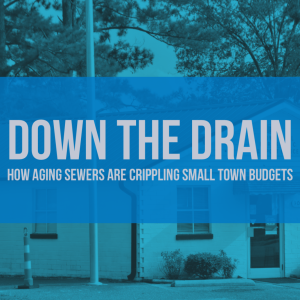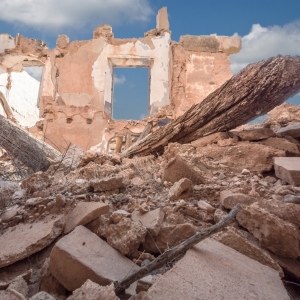The Stream, October 18, 2019: Drought Affecting 75M People Across the United States
The Global Rundown
Drought spreads in the United States, with the number of affected people reaching 75 million. Water shortages remain an issue in embattled Syria. Residents of Goma in the Democratic Republic of Congo battle water shortages and Ebola. Researchers call for changes in water rules in Arizona. Drought in Australia spurs a “starvation event” among flying fox species.
“The most shocking picture I’ve taken away from the last couple of weeks is a lot of animals that have come in looking like they’ve been mummified, that’s how dehydrated they were.” –Tania Bishop, a wildlife veterinarian in Queensland, Australia, in reference to drought’s impact on flying fox species in the region. Experts say that a combination of land clearing, bushfires, and prolonged drought conditions are having a severe impact on the creatures. The Guardian
In context: In Australia, Echoes of Past, Glimpses of Future As Country Braces for Hot, Dry Summer.
Latest WaterNews from Circle of Blue
Leaky Sewers Plunge Small North Carolina Towns into Financial Crisis — State confronts challenge of affordable, reliable sewer service for some of its poorest communities.
HotSpots H2O: Egypt and Ethiopia Spar Over Nile River Dam in Latest Round of Talks — Negotiations over how to fill and operate a controversial dam in Ethiopia are once again deadlocked after a tense back-and-forth.
By The Numbers
75 million People in the United States who are now being affected by drought, according to the latest report from the U.S. Drought Monitor. The Southeastern United States, where more than 30 million people are experiencing some degree of drought, is the hardest-hit. U.S. News & World Report
170,000-200,000 Syrians displaced due to the recent Turkish military offensive in the country’s northeast. Aid agencies say water shortages are a “critical concern” among the displaced. Water scarcity is also affecting 400,000 people in the city of Hasaka following damages to the Alouk water station. Reuters
Science, Studies, and Reports
Researchers at Arizona State University warn that a current set of water rules in the Phoenix area may be unsustainable long-term. With the Central Arizona Groundwater Replenishment District (CAGRD), developers are able to build homes in groundwater-dependent areas, and then the district is responsible for securing surface water to replenish area aquifers. With district growth exceeding expectations, however, the CAGRD is now struggling to secure enough water supplies to replenish groundwater. Additionally, the district has often relied on water from the Colorado River to recharge the aquifers, but the researchers note that Arizona faces cuts to its Colorado River supply next year. Due to these reasons, researchers claim an overhaul of the CAGRD system is needed. AZ Central
On the Radar
For more than a year, Ebola has been a concern in Goma, Democratic Republic of Congo, but chronic shortages of clean water have beleaguered the city for even longer. The city of 2 million has been without running water for years, and residents are instead forced to gather water from the Lake Kivu, a large but polluted waterbody nearby. NPR
Correction: The October 10, 2019 edition of the Stream incorrectly stated that a U.S. Department of Ecology developed cleanup plans for waterbodies in Washington. The plans were actually developed by the Washington state Department of Ecology.
Kayla Ritter is a recent graduate of Michigan State University, where she studied International Relations and Teaching English to Speakers of Other Languages. She is currently based in Manton, Michigan. Kayla enjoys running, writing, and traveling. Contact Kayla Ritter







Leave a Reply
Want to join the discussion?Feel free to contribute!